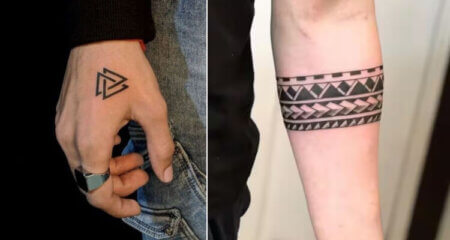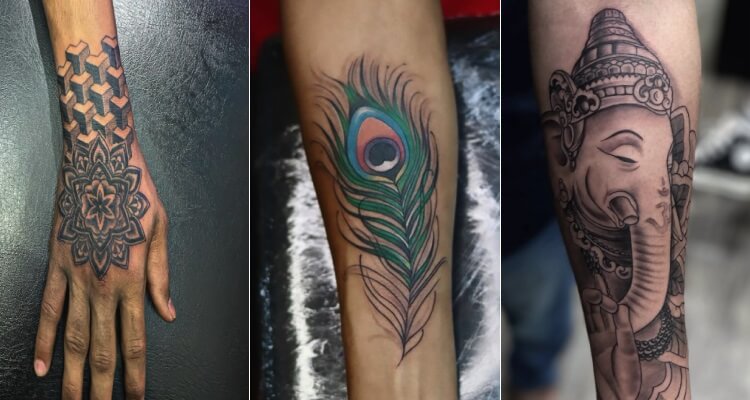
20 Amazing Indian Tattoo Designs in 2024
Posted on
Tattoos are generally viewed as a powerful tool to express feelings, love, desires, and beliefs. Combined with creativity and innovation, tattoos in many parts of the world represent deep cultural and traditional beliefs.
Traditional tattoo designs, which combine ancient symbolism with modern beauty, continue to have a distinct place in Indian body art. These designs are potent manifestations of culture and identity, ranging from elaborate tribal patterns and sacred themes to elements influenced by mythology and the natural world.
Tattoo artists in India incorporate contemporary tattooing techniques while adhering to their traditional roots, popular styles such as mandalas, mehndi-inspired florals, and deities like Shiva and Kali have evolved. In this informative guide, discover a collection of 20 traditional Indian tattoo designs or patterns.
List of Traditional Indian Tattoo Designs in 2024
The old conventional patterns of tattooing are seen to be rooted in South East Asia utilizing mythology, spirituality, nature, and symbols. Here are 20 Indian traditional tattoo designs in 2024.
1. Lotus Flower Design
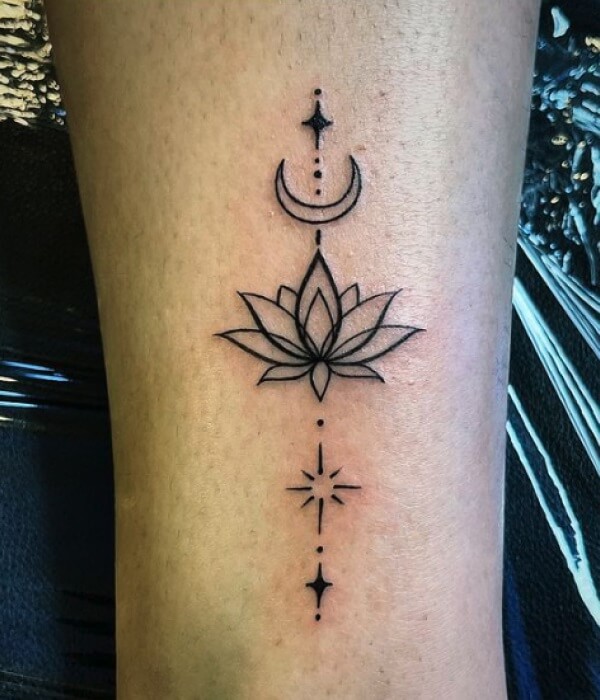
In Hinduism and Buddhism lotus is associated with purity, enlightenment, and rebirth. It is usually made with a geometrical design commonly known as Mandalas. From squalor and yet blooms, the lotus symbolizes some form of coming up from a low place and rebirth.
Key Characteristics:
- In Indian tradition, people have linked it with Laxmi and Saraswati, the goddesses of wealth and knowledge respectively.
- Like any other tattoo design, it can be drawn with geometric patterns, the outlines are thin and can be intricately shaded, it has symmetry, and therefore can be best executed on the back, arms, or chest.
2. Peacock Feather
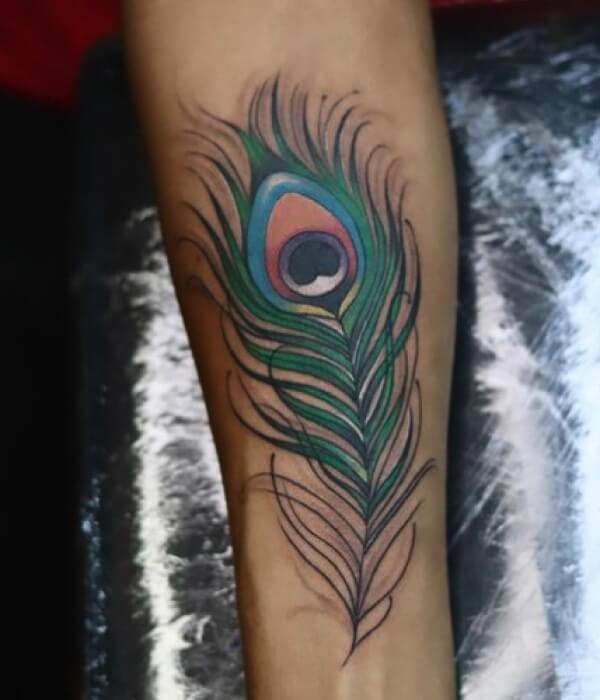
In the Indian tattoo design, the peacock feather is one of the most prized symbols that stand for beauty, sophistication, and spirituality. This is sentimental favor as well, especially as the feather belonging to lord Krishna that stands for divine love.
Key Characteristics:
- The feather is generally glamorous and commonly tailored with remarkable graphic and curvilinear patterns, characterized by a multicolored sheen.
- Get a peacock feather design as it is colorful and can be done on the forearm, back, or ankle.
3. Om Symbol
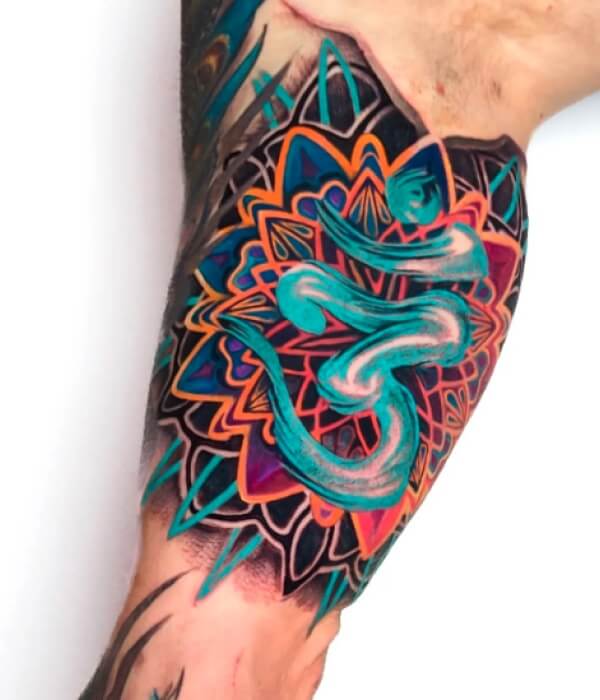
One of the most recognizable symbols within tribal Indian tattooing is the Om symbol. Drum is the voice of the cosmos and it symbolizes the supernal reality, self, and spirituality.
Key Characteristics:
- In Hinduism, the symbol of Om is chanted as a mantra in mediations and prayers, holding the concepts of harmony, equilibrium, and oneness.
- When it comes to tattoos, the Om sign is most commonly simplistic but very deep, it can be represented in curvy lines and is sometimes drawn together with other spiritual patterns like a lotus or a mandala.
4. Mandala
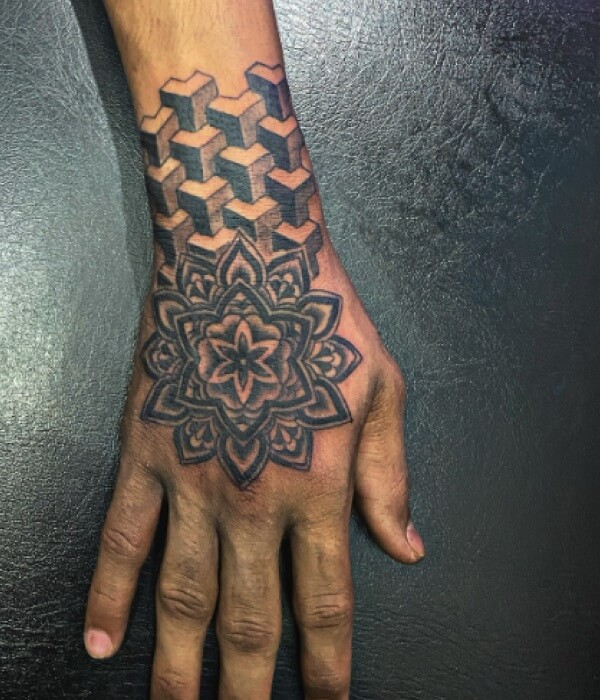
The mandala is one of the most enchanting and thoroughly sacred forms in traditional Indian tattooing, it represents the universe, harmony, and completeness.
Key Characteristics:
- Originally, mandalas were drawings that came from Hinduism and Buddhism and are circle images that, most of the time, spread from one point as a symbol of equilibrium and rhythms of life.
- Some of the common areas for Mandala tattoos are the back, chest, and foreheads of the body. Mandalas can be done on their own or combined with other designs and as a symbol, they resonate both as a beautiful art and as a symbol of wholeness of the universe.
5. Ganesh
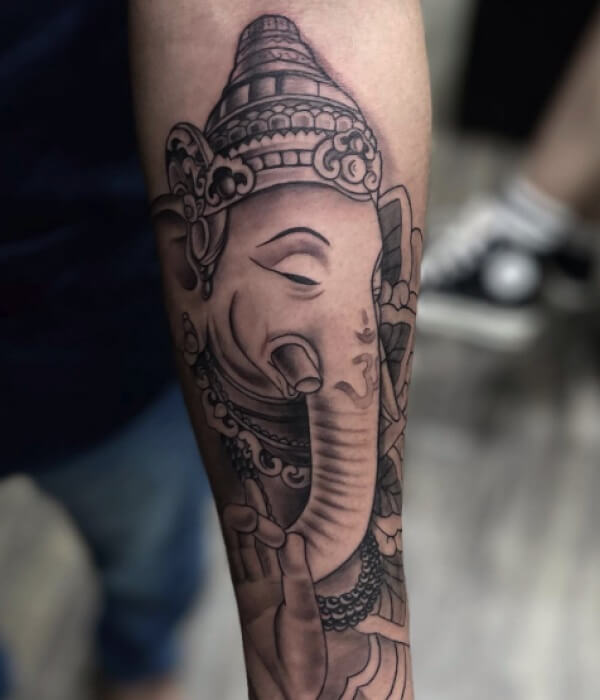
The Ganesh is an extremely popular tattoo design in India because Lord Ganesh is considered to be the god of wisdom, prosperity, or new beginnings and the destroyer of all evils.
Key Features:
- Ganesh is normally portrayed as having the head of an elephant and the body and the trunk of a human representing strength, knowledge, and victory over all odds.
- Ganesh is just like any other tattoo and he can be depicted in complexity, right from simplicity which is the simplicity of the icon, and going up the complexities of the artwork with other designs.
6. Henna Patterns
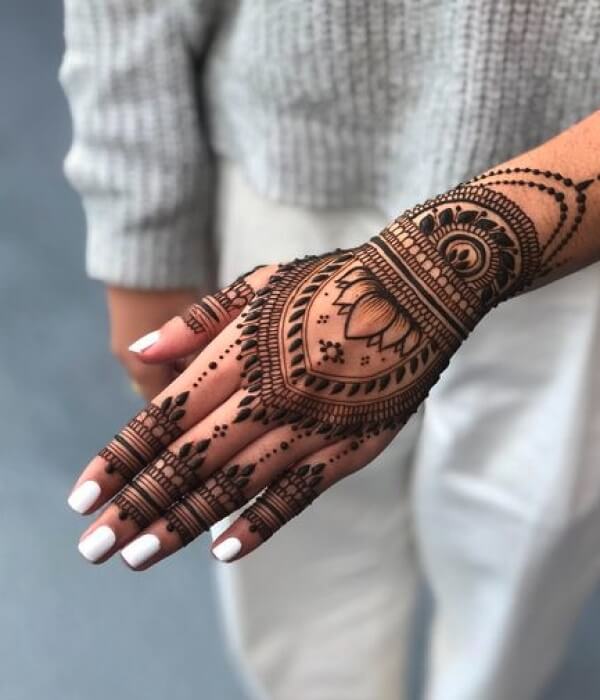
Henna patterns, or Mehndi designs, are traditional forms of body art in Indian culture, typically applied during festivals, weddings, and celebrations.
Key Characteristics:
- As tattoos, these intricate designs capture the elegance and beauty of henna, with their flowing lines, floral motifs, paisleys, and mandalas.
- Each pattern symbolizes various cultural and spiritual meanings such as good luck, joy, and protection.
7. Trishula (Trident)
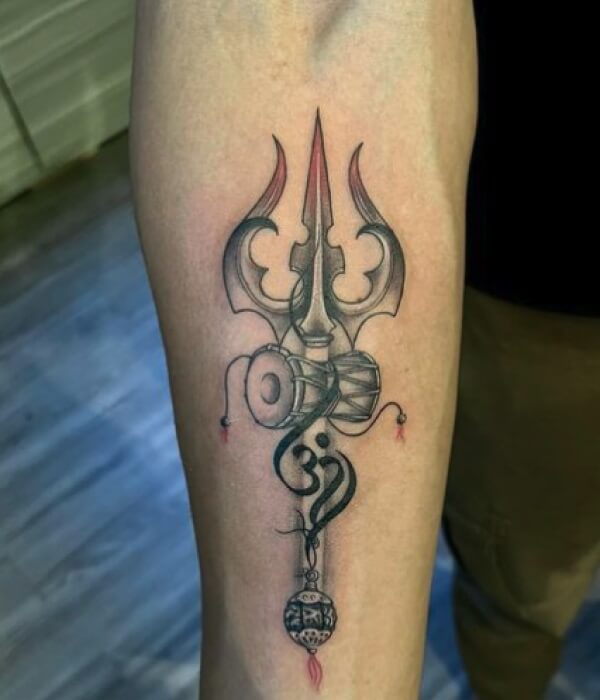
Trishula or trident is another significant symbol in traditional Indian tattoos which is linked with Lord Shiva, one of the major Gods in Hinduism.
Key Characteristics:
- The three tridents represent the cycles and state and the balance of the cosmos. Creation is the first prong of the trident, the second is preserving and the third is destruction.
- It is also considered as symbolizing three states of awareness, wakefulness, sleep, and dream.
8. Tiger
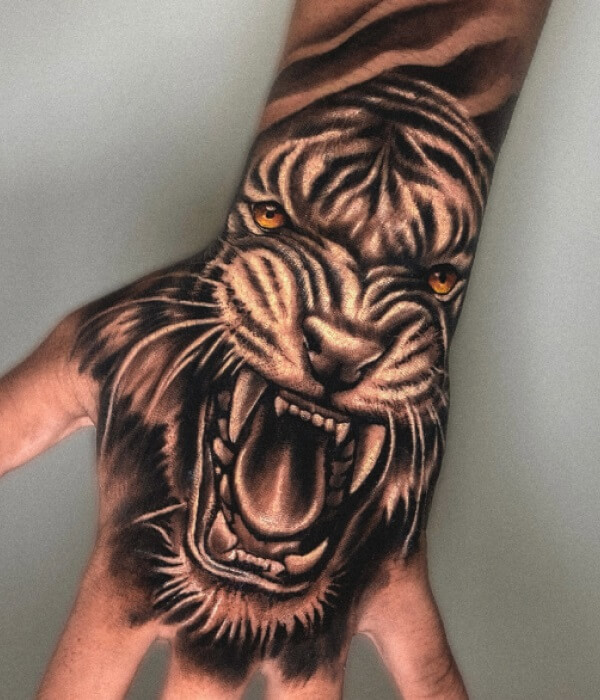
The tiger is the living symbol in Indian culture, the embodiment of strength, power, courage, and royalty. Hindu mythology has a lot to do with the association of tiger with Durga who rides on the tiger to fight.
Key Characteristics:
- In terms of style it can be depicted as any other tattoo and for instance, at the same time with the portraits in dynamic realistic silhouette, it can also be stylized traditionally Indian.
- It’s aggressively drawn with the muscle figure that makes it a symbol of some power and bravery.
9. Shiva’s Third Eye
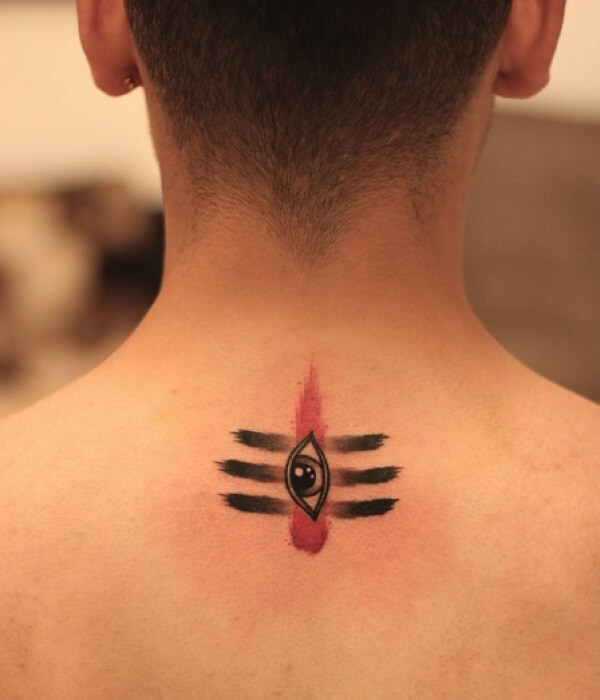
The third Eye of Shiva is one of the significant conventional Indian tattoo motifs acting as a metaphor for clairvoyance or vision, spiritual enlightenment, or simply the mitigation of evil.
Key Characteristics:
- According to Hindu mythology, Lord Shiva’s third eye, which represents heightened awareness and spiritual awakening, can see beyond the material world.
- It is also linked to the obliteration of illusions, removing the veil, and embracing the light and truth.
10. Kalasha (Sacred Pot)
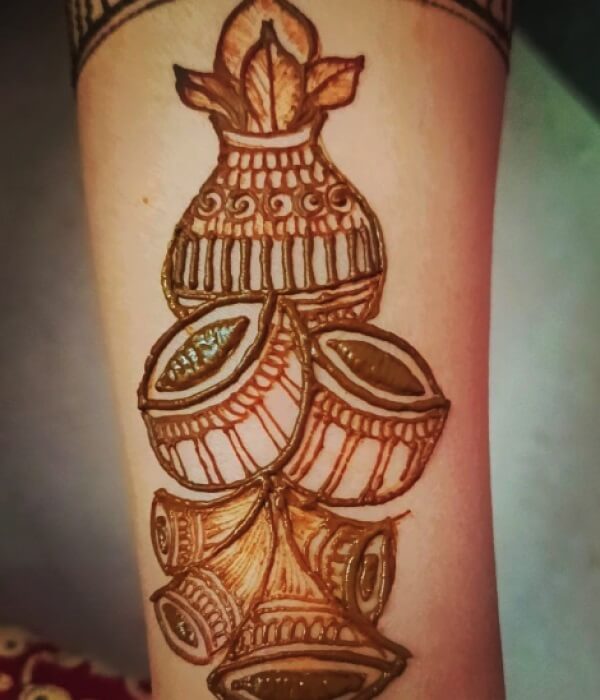
The Kalasha, or the sacred pot is a common symbol in Indian iconography and art symbolizing prosperity, harvest, and the goddess.
Key Characteristics:
- A holy water vessel made of metal is usually filled with water and coconut water respectively, it has mango leaves on top symbolizing life and pregnancy.
- When it comes to tattoos, the Kalasha can be drawn to the smallest detail in the form of an intricate and real pattern and other additions associated with the Hindu ceremony.
11. Nataraja
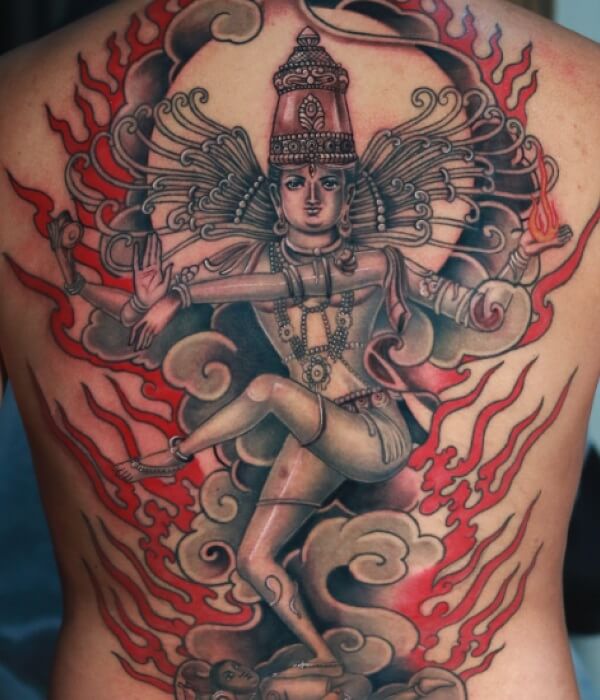
The dancing image of Shiva is perhaps the most popular in India and represents the divine dance of creation while preserving and destroying the universe. Nataraja seen dancing in an arabesque position with one leg raised while standing on Apasmara and embraced by a ring of fire stands for the Chandala meaning the cyclical process of the universe.
Key Characteristics:
- On this basis, it seems that his dance equilibrates the energies of the universe and symbolizes the creation of the world and the annihilation of evil, or ignorance.
- When done as a tattoo, the Nataraja is even more intricate and complex, capturing the perfect form of Shiva at the moment, the flames, contours, and additional features such as the drum representing creation and fire as destruction.
12. Koi Fish with Lotus
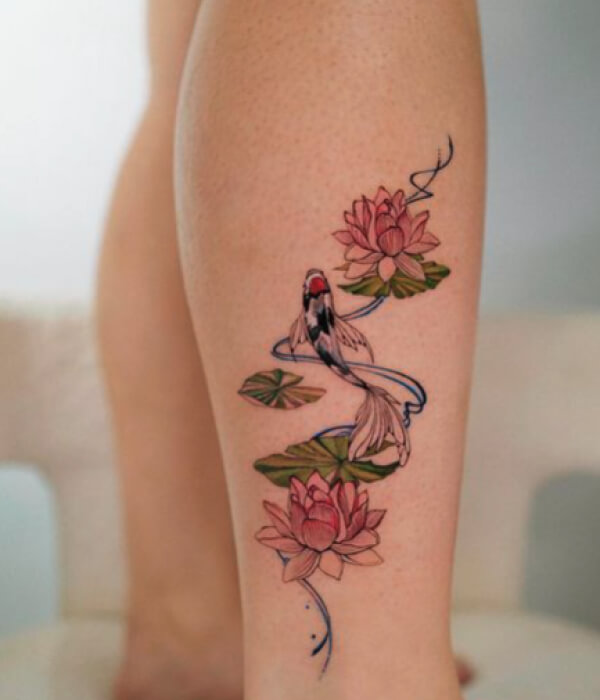
The lotus koi fish tattoo design is an amazingly looking symbolic tattoo that combines two important parts of Oriental traditions.
Key Characteristics:
- Koi fish in Hinduism and Buddhism have been shown that the koi fish also symbolize stamina, tenacity, and skill in getting past adversities, due to the reality that these fish are well known to swim against currents.
- The lotus flower on the other hand symbolizes purity, and spiritual advancement, originating from murky waters, comes out pretty in its bloom.
13. Banyan Tree
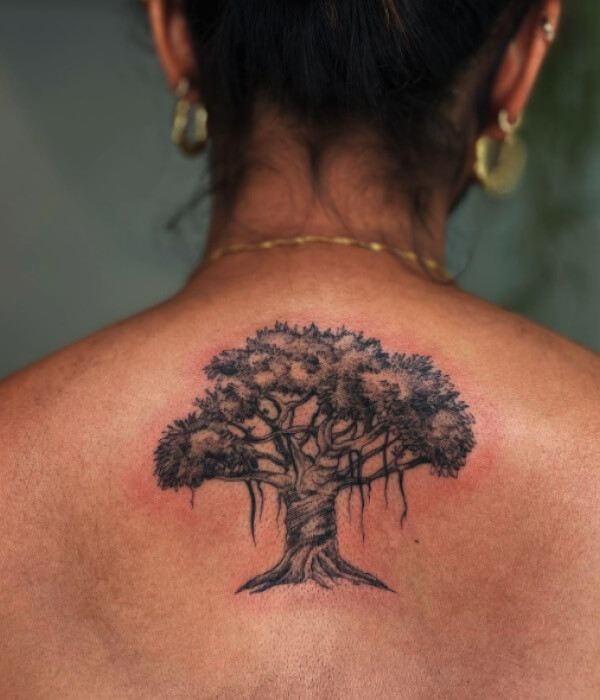
In Indian culture, the Banyan tree is regarded highly since it symbolizes growth, development, and eternity of life.
Key Characteristics:
- It is also referred to as the god’s tree in Hinduism and Buddhist tradition because of its importance in these two religions.
- Although is known as ‘Digital Tree’, or more specifically ‘Banyan Tree’ the emblem of stability, strength, and spiritual ground.
14. Hamsa Hand
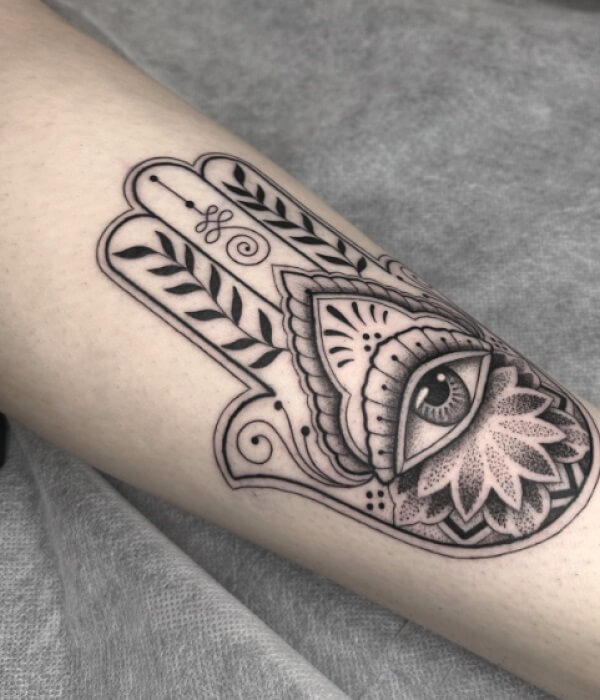
The Hamsa hand is palm-shaped and is also commonly referred to as the Hand of Fatima or the Hand of Miriam, and is regarded as being a protective symbol most commonly used in Egypt and Islamic countries as well as in India.
Key Characteristics:
- The Hamsa in Hinduism has always been linked with protection as well as wisdom as a bird.
- Design has an elemental sign, and is quite often complemented by patterns and markings, including the eye, which is intended to protect from misfortune and to attract luck.
15. Sun and Moon
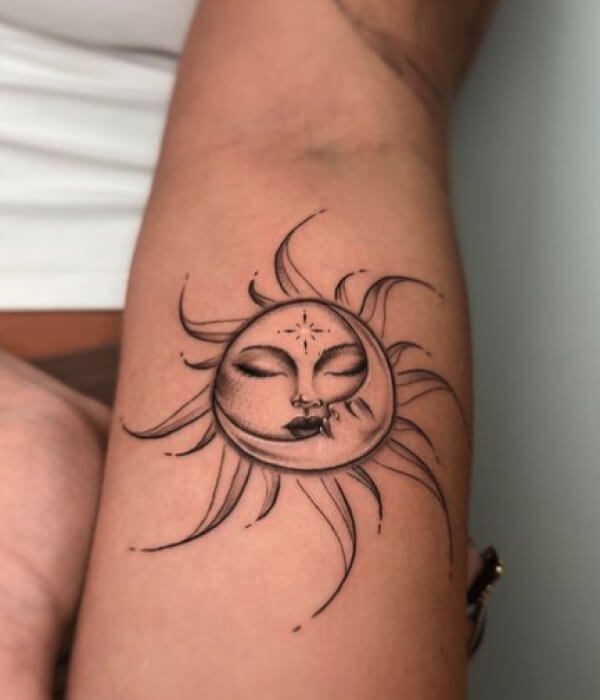
A potent symbol of duality, balance, and the interaction of opposites in life is the Sun and Moon tattoo design.
Key Characteristics:
- In many traditions, the moon represents intuition, femininity, and the subconscious, whereas the sun represents vigor, energy, and masculinity.
- When the sun and moon are combined, they represent a balance between light and dark, day and night, and life’s cyclical nature.
16. Krishna and Radha
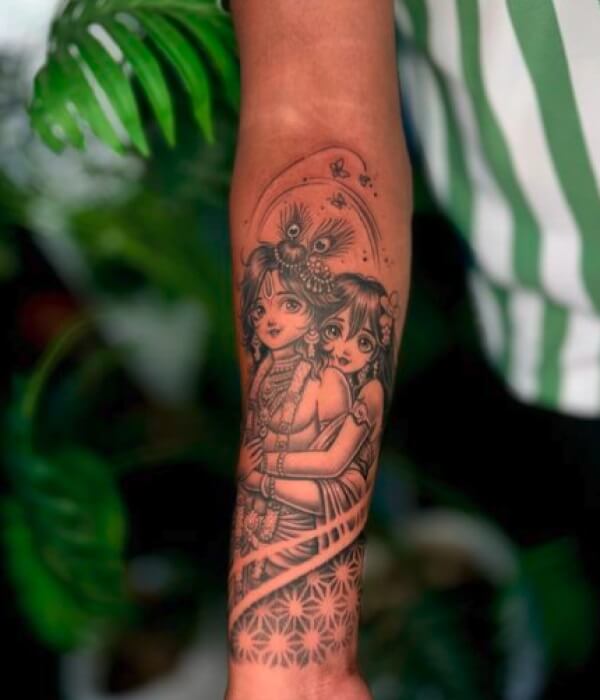
An exquisite illustration of heavenly love, devotion, and the unbreakable tie between the lover and the beloved is the Krishna and Radha tattoo design.
Key Characteristics:
- In Hindu mythology, Radha represents devotion and the soul’s yearning for God, while Lord Krishna represents laughter, charm, and heavenly love.
- Their relationship is a common topic in Indian art and spirituality because it is hailed as a profound example of love that transcends the material world.
17. Sanskrit Mantras
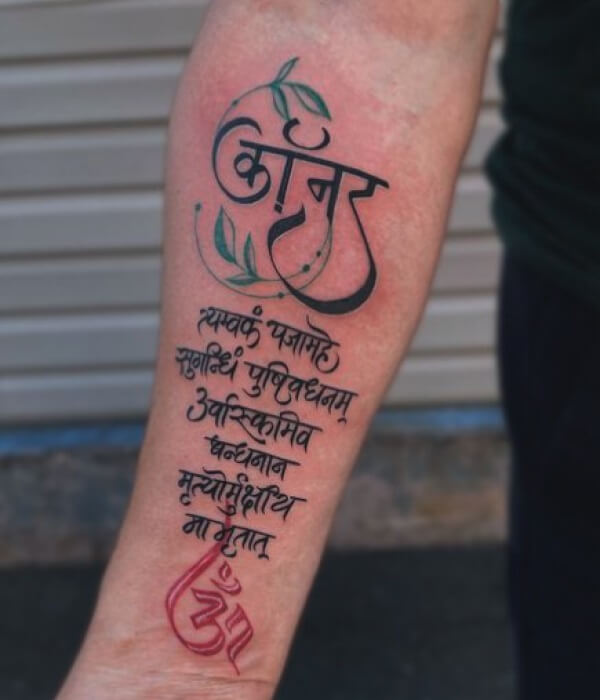
Sanskrit mantras are sacred phrases or sounds in Hinduism and Buddhism, believed to possess spiritual power and transformative energy.
Key Characteristics:
- These mantras are often derived from ancient texts and are used in meditation, prayer, and rituals to invoke divine blessings, enhance concentration, and promote inner peace.
- As tattoos, Sanskrit mantras can be elegantly designed in flowing script, often accompanied by meaningful symbols like lotus flowers, mandalas, or Om.
18. Elephant
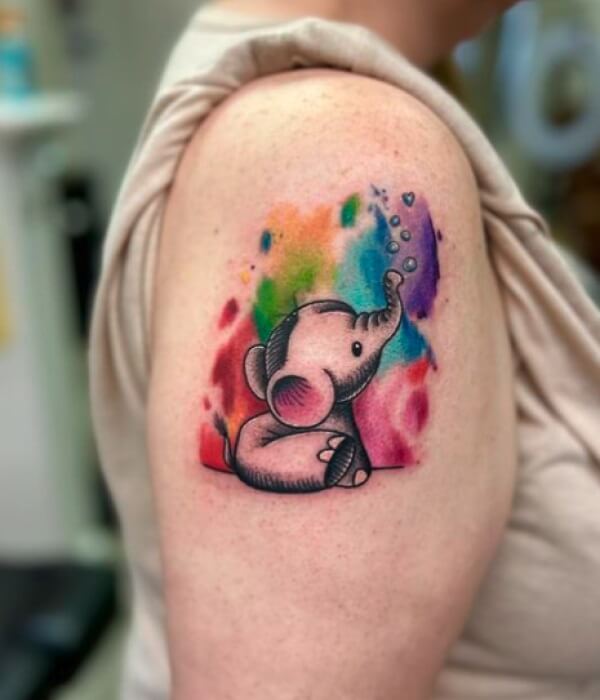
In Indian tradition, the elephant is a highly esteemed emblem that stands for strength, wisdom, and good fortune.
Key Characteristics:
- The elephant is strongly linked to Lord Ganesha, the obstacle-removal deity, who is shown with an elephant’s head in Hinduism.
- This connection highlights intelligence, loyalty, and protection even more.
19. Rangoli Patterns
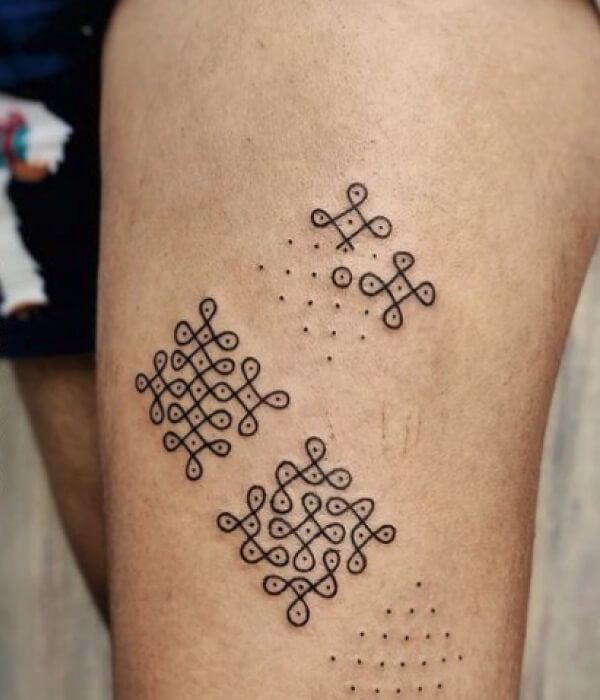
Decorative patterns drawn on the floor usually in powder or rice or flower petals are known as Rangoli, which is an Indian traditional artwork put during the festive seasons.
Key Characteristics:
- The above designs represent happiness, and fortune, as well as the representation of welcoming of any visitor, and hence, they represent the spirit of creation.
- Like tattoos, Rangoli-inspired designs embody the signs of these brightness and detailed patterns, patterns that encompass geometric patterns, flowers, and entwined lines.
20. Yin-Yang with Indian Elements
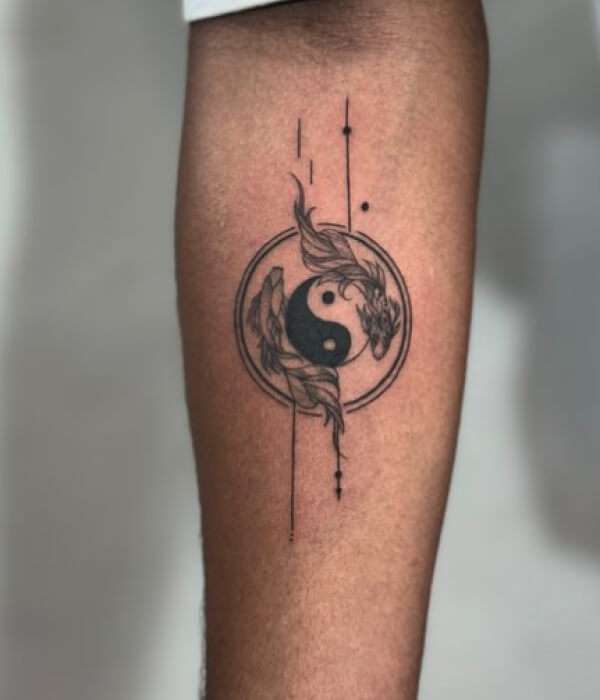
The yin-yang symbol is not Indian in origin, but it is frequently incorporated into traditional Indian tattoos by adding peacock feathers, lotus flowers, or mandalas for a fusion design.
Key Features:
- For people who appreciate Indian ancestry and ideals in their body art, these designs are significant because they blend spirituality, culture, and aesthetics.
- This tattoo pattern becomes a rich tapestry of culture and meaning when combined with traditional Indian symbols.
Conclusion
To sum up, for everyone interested in getting a traditional tattoo, it is possible to select the Indian design as it will be really deep both in the cultural and spiritual sense of life and in the graphic image sense.
Each design, whether henna or the picture of Ganesh which symbolizes power, or the more gentle lotus flower has its unique story set in history and tradition.

![30 Best Cobra Tattoo Ideas, Designs And Meaning [2025] 30 Best Cobra Tattoo Ideas, Designs And Meaning [2025]](https://www.trendingtattoo.com/wp-content/uploads/2025/01/Cover-2-450x240.jpg)
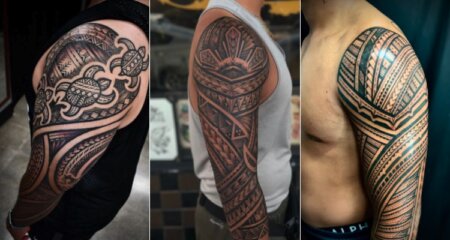

![Trending Tattoo Designs for Girls [2024] Trending Tattoo Designs for Girls [2024]](https://www.trendingtattoo.com/wp-content/uploads/2024/09/Trending-Tattoo-Designs-for-Girls_1-450x240.jpg)
